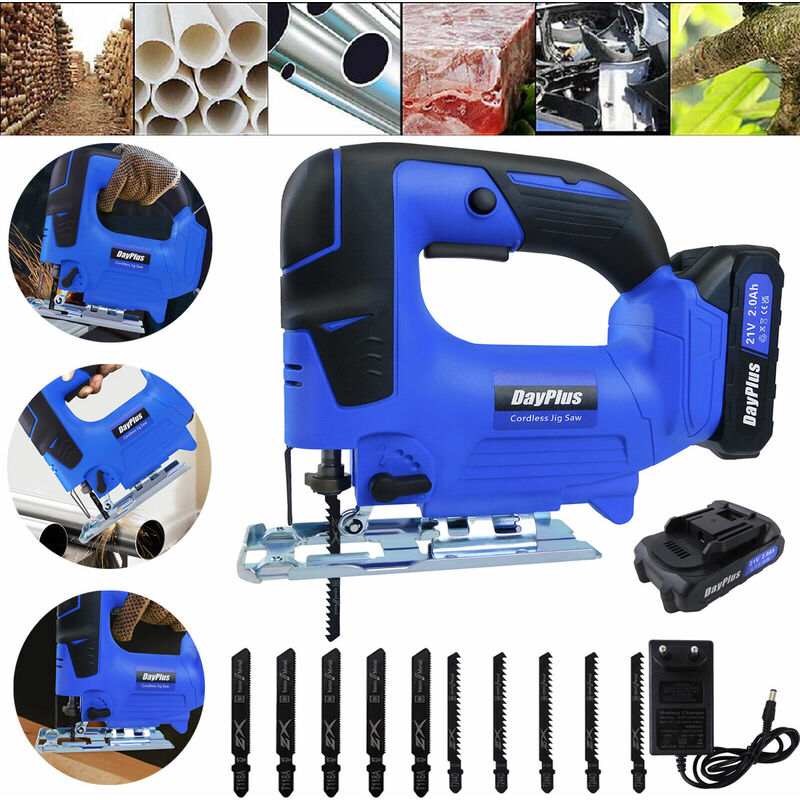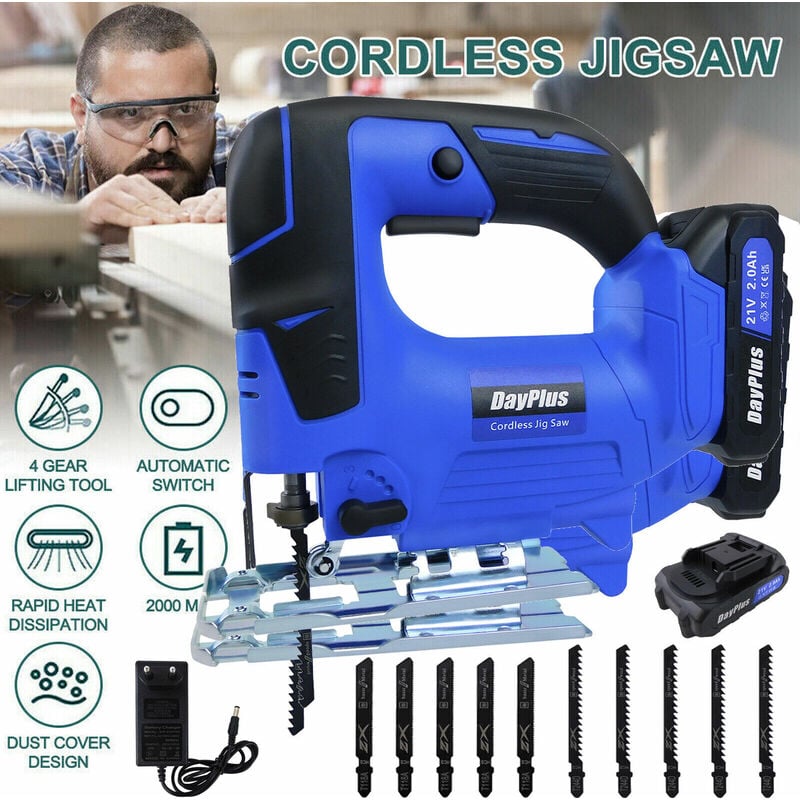Jigsaws
Jigsaws are the unsung heroes in the toolkit of both professional tradespeople and enthusiastic homeowners. Imagine a tool that dances through wood, metal, or plastic with precision – that's a jigsaw for you. They're not just tools; they're your creative partners in crafting everything from custom furniture to unique DIY projects. When it comes to brands, Dewalt jigsaws are like the reliable workhorse, known for their robustness and consistent performance. They're the kind you reach for when the job needs to be done right. Then there's the cordless jigsaw, a symbol of freedom in tool form. Say goodbye to tangled cords and limited reach. These are perfect for working anywhere, from a high-up roof to a backyard shed. And let’s not forget Makita jigsaws. They’re like the sleek sports cars of the jigsaw world - powerful, efficient, and designed with an eye for comfort and ease of use. Whether you're cutting a custom piece of woodwork or making quick alterations, a jigsaw is your go-to buddy. It's not just a tool; it's a gateway to turning your visions into reality, piece by precise piece.























Frequently Asked Questions (FAQ)
A jigsaw is a power tool that can be used to make straight and curved cuts in wood, plastic, and other materials. It is a versatile tool, as it can be used to cut intricate shapes and curves. It is also relatively easy to use, making it a great option for beginners. The blades are the most important part of the jigsaw. They come in different sizes, shapes, and materials, so you can choose the right one for your particular project. The right blade can make all the difference in how well you can make cuts. So if you're looking to get serious about woodworking, then a jigsaw saw is an essential tool. It is versatile, easy to use, and can help you create beautiful projects with ease.
Using a jigsaw is an easy way to make precise cuts in wood, metal, and other materials. With the right techniques, you can master this versatile power tool in no time. To get started, you'll need to select the right blade for the job. Jigsaw blades come in a variety of shapes and sizes for different cutting materials. Once you've selected the blade, make sure the cutting area is secure and clamped down so it doesn't move while you work. Then, line the blade up with your cutting line, plug in the jigsaw, and turn it on. Make sure to keep a steady hand and go slow to get the best results. To make curves and other shapes, try using a rocking motion or small back-and-forth strokes to follow the line. Finally, when you're done, turn off the jigsaw and unplug it. With a little practice, you'll soon be able to make perfect cuts with your jigsaw!
Cutting plexiglass with a jigsaw is a great way to get the perfect cut with minimal effort. To get started, make sure you have the right tools: a jigsaw, a fine-toothed wood blade, safety goggles, and a dust mask. Then, begin by measuring and marking the area you want to cut. Make sure to make a few extra marks that indicate the exact area you want to cut. Next, clamp the plexiglass down to a flat, stable surface so it won't move while you're cutting. Then, adjust your jigsaw to the highest speed and start cutting the outline of your shape. For best results, make sure to keep the blade at a shallow angle. As you go, use a slow, steady motion and make sure to stay on your marks. Once you've finished cutting, use a file or sandpaper to smooth down any rough edges. And there you go — you now know how to cut plexiglass with a jigsaw!
What to consider before you buy a jigsaw?
When choosing a jigsaw, a versatile and essential tool for intricate cutting tasks, it's important to select one that aligns with the specific demands of your projects. Jigsaws are highly favoured for their ability to make precise, curved cuts in a variety of materials, including wood, metal, and plastic.
Leading brands like DeWalt, Makita, and Bosch offer jigsaws with distinct features. A DeWalt jigsaw is often recognised for its robust construction and high power, making it ideal for demanding cutting tasks. Makita jigsaws are known for their precision and ease of use, suitable for both professional and DIY use. Bosch jigsaws balance performance and ergonomics, offering reliability and comfort for prolonged use.
While considering a jigsaw, it's important to note its difference from metal cut off saws. Jigsaws are designed for detailed and intricate cutting, often requiring finesse, whereas metal cut off saws are geared towards straight, rapid cuts in metal.
Key factors to consider when choosing a jigsaw include the type of blade it can accommodate, as different blades are required for different materials and types of cuts. Variable speed control, orbital action, and an anti-vibration mechanism are also important features that enhance the tool's functionality and user comfort.
In summary, selecting the right jigsaw, whether it's a DeWalt, Makita, Bosch, or another brand, involves considering the tool's power, blade compatibility, and additional features like speed control and comfort. While metal cut off saws are suited for straight cuts in metal, a jigsaw offers the versatility and precision required for intricate and detailed cutting tasks in various materials.